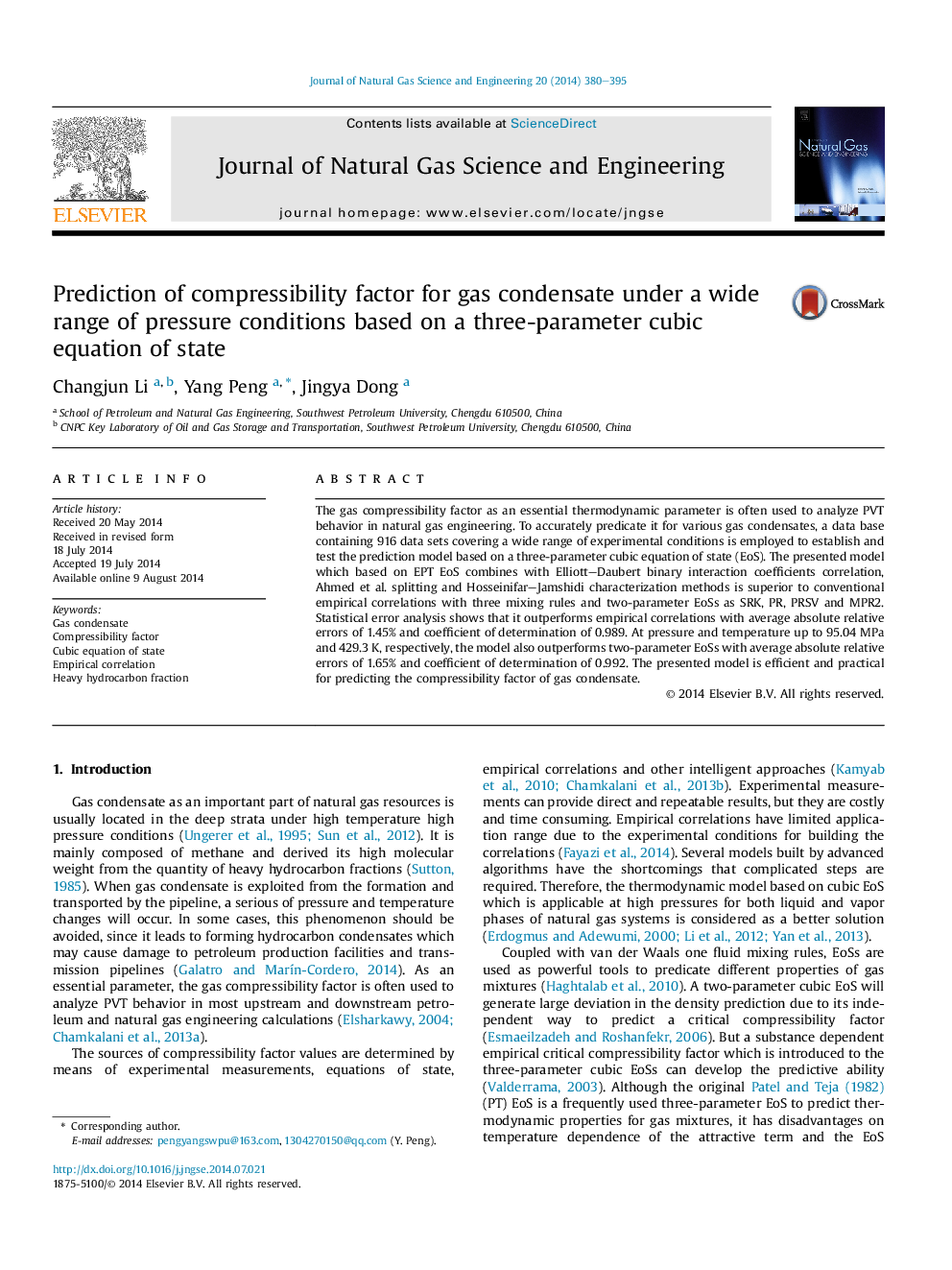| Article ID | Journal | Published Year | Pages | File Type |
|---|---|---|---|---|
| 1757898 | Journal of Natural Gas Science and Engineering | 2014 | 16 Pages |
•Four three-parameter EoSs are evaluated at different temperatures and pressures.•Three BIC determining methods are compared for various gas condensates.•Six characterization methods for pseudo components are optimized.•A new method is proposed for gas condensate at a wide range of pressure conditions.•The accuracy of the method is better than applied empirical correlations and EoSs.
The gas compressibility factor as an essential thermodynamic parameter is often used to analyze PVT behavior in natural gas engineering. To accurately predicate it for various gas condensates, a data base containing 916 data sets covering a wide range of experimental conditions is employed to establish and test the prediction model based on a three-parameter cubic equation of state (EoS). The presented model which based on EPT EoS combines with Elliott–Daubert binary interaction coefficients correlation, Ahmed et al. splitting and Hosseinifar–Jamshidi characterization methods is superior to conventional empirical correlations with three mixing rules and two-parameter EoSs as SRK, PR, PRSV and MPR2. Statistical error analysis shows that it outperforms empirical correlations with average absolute relative errors of 1.45% and coefficient of determination of 0.989. At pressure and temperature up to 95.04 MPa and 429.3 K, respectively, the model also outperforms two-parameter EoSs with average absolute relative errors of 1.65% and coefficient of determination of 0.992. The presented model is efficient and practical for predicting the compressibility factor of gas condensate.
